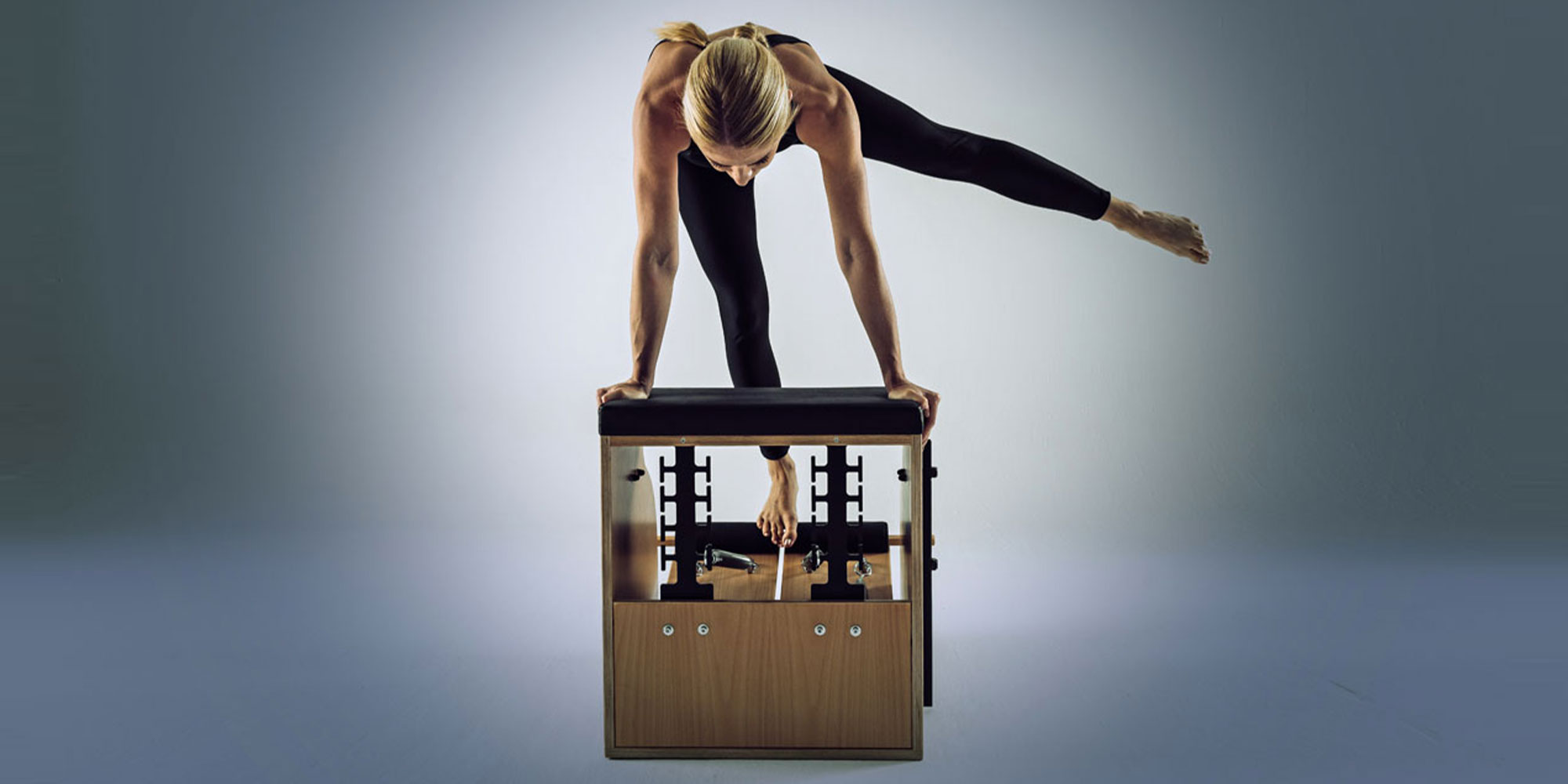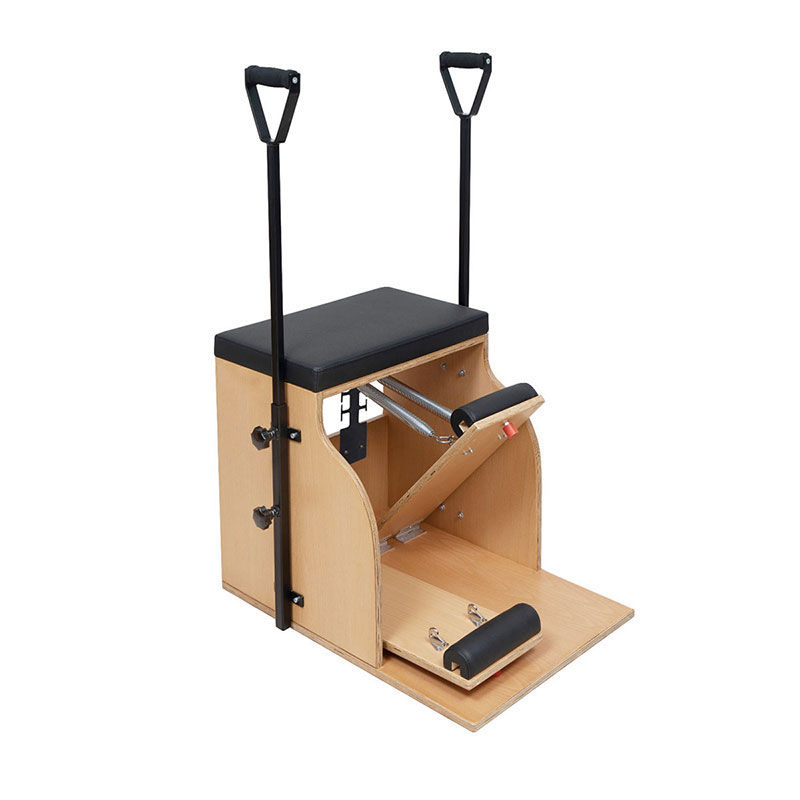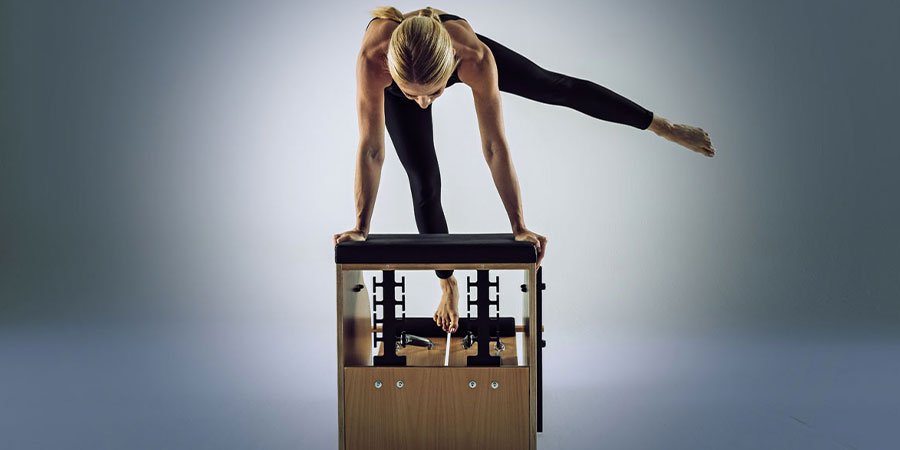
The Pilates Chair is a multipurpose apparatus that offers a unique approach to Pilates, balancing the body in a different way than other equipment. Its design allows users to achieve amazing results, making it suitable for individuals recovering from injuries or those with physical limitations. Like the reformer, the Pilates chair, also known as the “wunda” chair, is one of the original pieces of equipment designed by Joseph Pilates.
It can be used from various positions, including in front of the pedal or seated with the pedal behind, providing a perfect environment for standing movements and making it a highly functional piece of equipment.
FAQ
The Pilates Chair, also known as the Wunda Chair or Stability Chair, is a compact yet powerful piece of Pilates equipment. It typically features a small, stable base with a padded seat and a spring-loaded pedal that offers resistance.
Benefits include:
- Builds strong core and stabilizing muscles: Many chair exercises require significant core engagement for balance and control.
- Improves balance and coordination: The unstable nature of the pedal challenges your balance and proprioception.
- Increases lower body strength: Exercises like leg presses and lunges on the chair effectively target the legs and glutes.
- Enhances upper body strength and stability: Pushing and pulling movements against the pedal resistance work the arms, shoulders, and back.
- Offers a challenging and versatile workout: Despite its size, the chair provides a wide range of exercises for all fitness levels.
- Space-saving design: Its compact size makes it ideal for home studios or smaller spaces.
The Pilates Chair offers a diverse range of exercises, including:
- Leg presses and lunges: Strengthening the quads, hamstrings, and glutes.
- Arm work: Pushing and pulling the pedal to work the biceps, triceps, shoulders, and back.
- Core exercises: Planks, teasers, and twists performed on the chair challenge core stability.
- Balance exercises: Standing and kneeling exercises on the chair improve balance and coordination.
- Spinal articulation exercises: Movements that promote flexibility and control of the spine.
While some chair exercises can be quite challenging, the Pilates Chair is adaptable for beginners. Modifications can be made to exercises to reduce the resistance and increase stability. It is highly recommended that beginners work with a qualified instructor to learn proper form and technique on the chair.
The spring-loaded pedal of the Pilates Chair introduces an element of instability, requiring you to engage your core and stabilizing muscles to maintain control. Exercises performed on one leg or while balancing on the chair are particularly effective for improving balance, coordination, and proprioception (your body’s awareness of its position in space).





